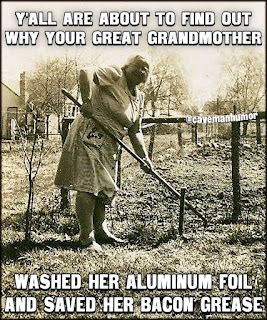To write this post I decided to look back at my first post for this blog, where I decided that I'd not get political or snarky. I think I've avoided politics, anyhow. In that first post I also said that the tone would be positive here.
Thus this farewell to 2020, a bad year by most accounts, but I'd claim that 1862 or 1942 were far worse, existentially. What can be said good about a difficult year?
First, if you are reading this, consider the alternative: you might not be around to read it, right? Second, think of stuff we get to leave behind. COVID is still with us, along with economic malaise, racial tensions, and the urgent problem of climate change. But one thing is leaving us. Yes, I'm thinking of one particularly hateful person, a walking toxic cloud of entitlement and narcissism. May his remaining days on this planet be miserable. Nuff said. Begone.
Third, think back to the good things you managed to accomplish. I focus a great deal of the DIY infrastructure of rural life here, so I'll share one odd project that changed me in 2020.
We've been gifted (cursed, I'd have said in 2013, when Tractorpunk began) with three 40' shipping containers. One has a broken back, and the rain comes right in. I tried for years to be rid of this thing, and I hated even looking at it. We could not give it away, as we'd done with a few other white elephants on the property. Here's an old truck body, once a den for foxes and discarded cabinets now hanging on the walls of our utility room (the cabinets, not the foxes).
For the 40' container, no roll-back truck was going to stop by to get it. I'd contemplated bringing the shop class down from the community college nearby to cut it up, so they'd get practice with their torches.
Then it hit me: that container would work as well as the other two (spanned by a roof to make a run in) if I could stop the rain water from getting in. I kept looking down at it from the barn roof we were coating with a sealant. I don't know how many times I said "you know, we might be able to do something with that stupid thing..."
So first, I cut a hole in the side that I optimistically called a "door" and walked around; this made life easier, as the container's doors are so heavy that the Incredible Hulk would grunt, opening them. A puddle of frozen water had collected, but the wooden floor was solid and I figured we might as well improve it for dry storage.
To make a long story short, look at the photo that leads off the post. With my farmhand Quentin, we stretched a line to find level, then built our own rafters and put them atop sill boards; we used old lumber and scrap for 90% of the build. We got everything straight to within 1/16" of that line, and mason lines do not lie when they are taut.
Once we had a metal roof connected to posts set in cement, I had an equipment shelter for plows, disc harrows, and other implements that had been slowly rusting in the rain. Now they are on dry gravel where I can wire-brush, prime, and spray the lot with a coat of new paint. I'll be able to back the tractors up easily to each and attach them for field work. Others gave sage advice: Jeff, thanks for the reminder that a a fascia board in front will prevent sag between the posts. I found some old boards today in the lumber room that will finish the job.
This transformation of a hated item took a long time. For six years I'd glowered at the damned container, until one day it hit me: make it useful. Why did that take so long?
If you know me, you know I relate to places and objects better than I do to people. Working on stuff brings me joy, as does travel or the allure of timeless landmarks from my childhood. Conversely, too many people are energy-vampires. I just told a friend from my teens who wanted to reconnect "no thanks." I'm not that person any longer and I don't need a "friend" who is only going to draw upon shared memories of our 20s. I was glad to be shut of him, back then. Again, begone. The years are shorter now.
I'm not sure which J-Bolts, bags of cement, and treated boards would do the trick on a nasty or willfully ignorant human, but those of you with better people skills, don't give up trying to help them, to stop the leaks and frozen spots.
I say that as a guy who turned 60 and now has a couple of long-term health issues. But maybe the next 25 years (if I'm lucky) I have left won't be so miserable as 2020? The Science-Fiction-sounding year 2021 dawns with a bit of hope, with longer periods of daylight, and a vaccine.
Let's get busy building something worth keeping.




























